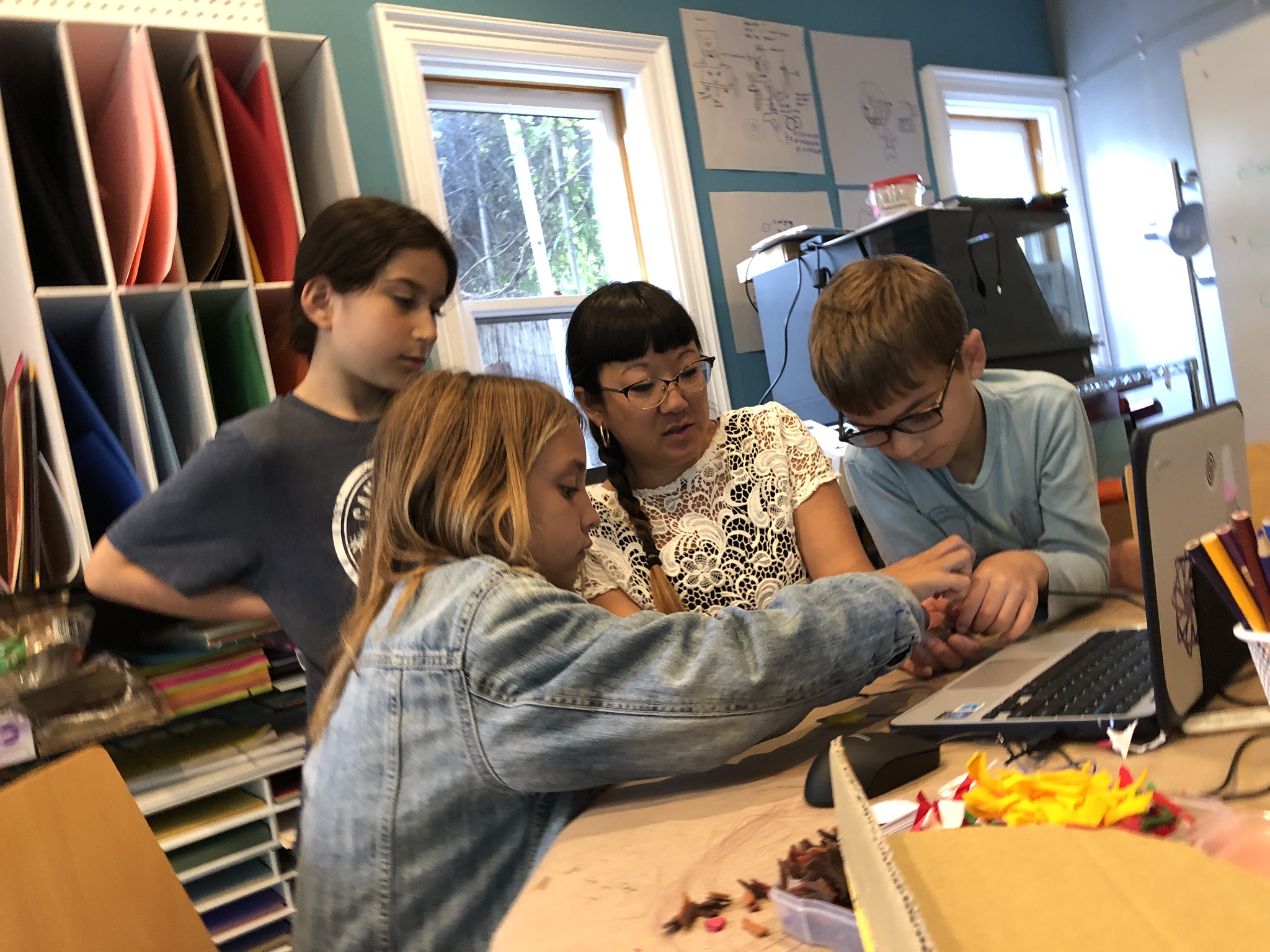Pop-up Playful Programming Camp in Berkeley - WICO Summer 2019 7.1
For the last week of the summer program, we moved the entire operation to the East Bay, setting up shop at the makerspace at the Maker Ed Community Studio in Berkeley. For the week we had a little bit of a smaller group and we tried to create a little bit more of an experimental process with more open-ended time for campers to explore their own ideas freely.
Even on the first day we had deeper explorations of both the toy dissection and beetleblocks simply by giving participants more time to dive into the tools. We brought out a couple of big electronic toys as add-ons to the wind-up mix which inspired some high ceiling investigations.
And with beetle blocks there were some amazing geometry-based projects and event a design inspired by the morning glory flowers that dot the wall behind the Maker Ed studio.
On the second day we started on the chain reaction activity which inspired this week’s campers to try some really ambitious experiments like creating hand made tracks, placing chairs on the table for height and event incorporating Micro:bit into the designs.
For the first time we stretched the build over two days to really give the group enough time to dive deep into their ideas. As usual it was amazing to see both the thoughtfulness in their descriptions of the mechanisms as well as their excitement in setting off the machine (a couple times in a row this week!).
For the rest of the week we had more “open make” time where the group worked on their own projects. This week we didn’t specifically introduce a theme since several of the campers already had projects that they were interested in pursuing, but organically the game “exploding kittens” inspired a few of the projects.
One of the most complex projects developed by a group of three of the participants was based on the taco cat card. They planned to make a huge taco cat with meowing sounds, servo fishes and tons of carefully constructed toppings.
They even spread the project out a bit with one of the tinkerers creating a copper tape ringed plate with RGB LEDs all around the edge. She planned to have the lights be activated when the taco is placed in the center of the plate.
The project was such a great example of the combination of aesthetic choices and lots of technical considerations. The cute exterior masked some really complicated circuitry and the group thought deeply about how to integrate the micro:bits and components. As well they created a really detailed overview of the design as a label for our computational exhibition.
Another exploding kittens themed project was the feral cat, a crazy critter with two spinning servo eyes with red LEDs and a recorded voice with the quote from the game. This maker added the morning glory vinyl stickers from her original project to the background of the design and also wrote out a detailed description of the code for our gallery walk.
In a different direction, another participant created yet another remix to the hit Lil Nas X song Old Town Road using a dissected toy. He took apart a singing/dancing robot and added a switch to control the motor. Additionally he added a really complicated cardboard mechanism to trigger the light sensor on the music circuit by uncovering the sensor.
Some of the other tinkerers focused on creating vehicles with the micro:bit/motobit combination. One of the kids built an incredible remote control car with headlights and brake lights that corresponded to the forward or backwards motion of the car.
Another maker went to the water and made a swimming robot that used two spinning servos to paddle it’s way through a small tub. We really needed a bigger pool, but this innovative design is an inspiration for future aquatic Micro:bit explorations.
The last week of the summer program was a great reminder of how much creativity and passion learners will bring to projects when given small intros, plentiful materials, clear examples and lots of time and space to experiment. We learned a lot about running computational tinkering workshops this summer and I can’t wait to share our reflections with teachers, educators and program leaders over the next few months.






















